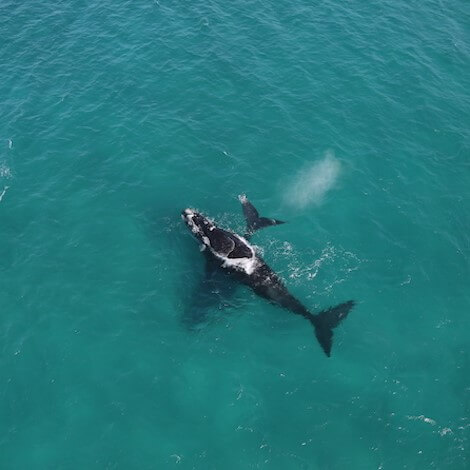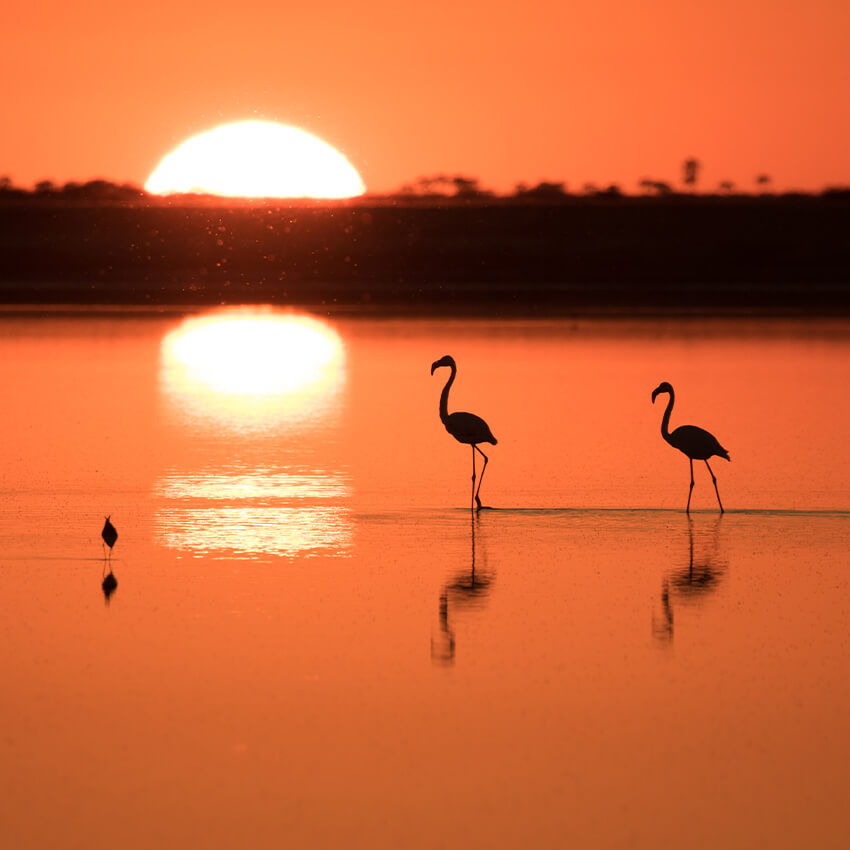Desert Lichen on the Skeleton Coast
 Pru Allison
Pru Allison
 February 16, 2022
February 16, 2022
Shipwreck Lodge sits at the top of many a travel list, and it’s not only its distinctive architecture that keeps it there, this is also the only lodge within the Skeleton Coast National Park.
The park is best known for the shipwrecks that punctuate its coastline, the desert-adapted animals who roam its dunes, and the feeling that this might just be the most remote place on earth, but there’s even more to this extraordinary stretch of coast. Where rocks protrude through waves of sand and once magnificent ships rust in pieces battered by the harsh elements, one of the most unlikely organisms occurs: the lichen.
Lichens are the result of a symbiotic relationship between two organisms – the love child of fungus and algae, functioning as a single, stable unit. They’re most common in high rainfall areas , but like the lions and elephants of the Namib, these lichens have adapted to life here, in one of the world’s least hospitable environments.
The desert lichens depend on the fog that rolls in from the Atlantic Ocean each day, bringing with it life-supporting moisture. Due to the extreme conditions in which they survive, desert lichens grow far more slowly than their more comfortable cousins, and while some lichens can grow several inches in a year, lichens here might grow several inches in 100 years. They make up for it in aesthetic appeal though, quilting rocks with swathes of colour and binding together fine soil sediments – a stabilising bloom of brightness in their arid world.
The Namib Desert is known as a fog desert, thanks to the Atlantic’s regular delivery, and its lichen presents a number of similarities to lichen that occurs in other fog deserts like the Atacama in Chile and Mexico’s Baja California, such as unique lichen fields where fruticose species (those with upright branches) act as fog collectors. An incredible 120 lichen species can be found in the Namib, most of which are endemic to the Namib, occurring nowhere else on the planet. This makes them especially important and the protection that the Skeleton Coast National Park provides them is imperative, particularly since they’re under threat from off road driving and mining elsewhere in the Namib. Few things are surplus in the desert (except perhaps sand), and lichens serve a vital ecosystem function as prime producers supporting communities of insects and spiders. The fungus component protects the algae which is normally unable to survive in a dry environment, thus enabling it to live in different climates around the world, such as here, in the Namib. Lichens use photosynthesis to convert carbon dioxide into oxygen, upon which we humans depend so are considered important to the sequestering of carbon on earth. They also absorb elements of the atmosphere, especially pollutants, allowing clever science type folk to extract the toxins and understand the levels in that environment.
Speaking of scientists, our very own co-founder and director of conservation Dr Jennifer Lalley completed her PhD studying desert lichens right here on the Skeleton Coast, despite having a world of wilderness at her fingertips.
“When we look at conserving wilderness areas, we tend to focus on the obvious and, I suppose, more easily-measured characteristics and species, so the micro-organisms are often overlooked and usually under-estimated,” our lichen expert explains. “The Namib desert is all about its fascinating micro-organisms, yet little was known about its unique lichen fields. When I realised how little was known, I was ecstatic at the thought of uncovering some of their secrets. It took 3 years of exploration, and a lot of crawling on hands and knees to study them, but I was in one of the most beautiful untouched wilderness areas of the world! I loved every minute. One of the more sobering results was that a machine-cleared track through a lichen field (i.e. for mining) can take several hundred years to recover. And within these lichen fields are unique communities of arthropods.”
Sobering indeed, but you’ll be pleased to hear that our commitment to conservation, outreach and sustainability extends to more understated species too.
So sure, soak up the coastline, marvel at the clay castles and towering dunes, and listen intently to tales of shipwrecks and doomed sailors but don’t overlook what might just be Shipwreck Lodge’s most fascinating feature – the desert lichen.
Photos: Dr Jennifer Lalley on the Skeleton Coast of Namibia
Special Offers
Our special offers are designed to help you experience everything southern Africa has to offer whilst also saving some all-important pennies. Whether you’re about to embark on a once-in-a-lifetime solo trip, or are celebrating a special occasion, have a peek at our offers and see what could be in store for you.
























